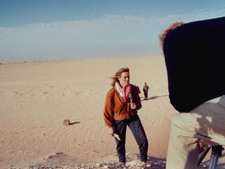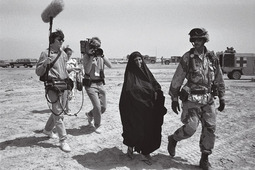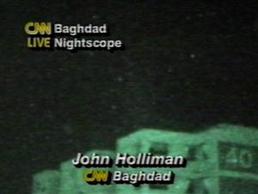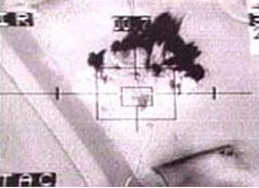Annex Foxtrot
|
In a new era in war press coverage, the media became highly regulated and fell under official scrutiny. The Annex Foxtrot, a 10-page document, set up protocol for media coverage of the Gulf War. Media censorship and press control aided by military-escorted press pools limited interaction with troops and Iraqis. It also restrained material dangerous to national security. Captain Wildermuth, chief Public Affairs Officer for U.S. Central Command emphasized this point:
"News media representatives will be escorted at all times. Repeat, at all times." The Pentagon began to dictate unprecedented regulation for covering military operations. |
Press pools limited the ability to cover war, despite satellite technology and no individual reporting was allowed. Media was refrained from publishing casualty photographs showing recognizable faces.
|
The Video Game WarThrough Annex Foxtrot, the government took control of war-time coverage. Unlike in Vietnam, they actively broadcasted issues about national security to avoid the credibility gap–another legacy of the Vietnam War. Satellite technology allowed for live war coverage and military innovations allowed for “camera-equipped high-tech-weaponry directed against Iraqi targets.” This state-of-the-art technology allowed the media to frame the war as a dramatic, patriotic narrative. Watching live missiles hitting spot-on targets, much like video-games, became the hallmark of the Gulf War.
|





